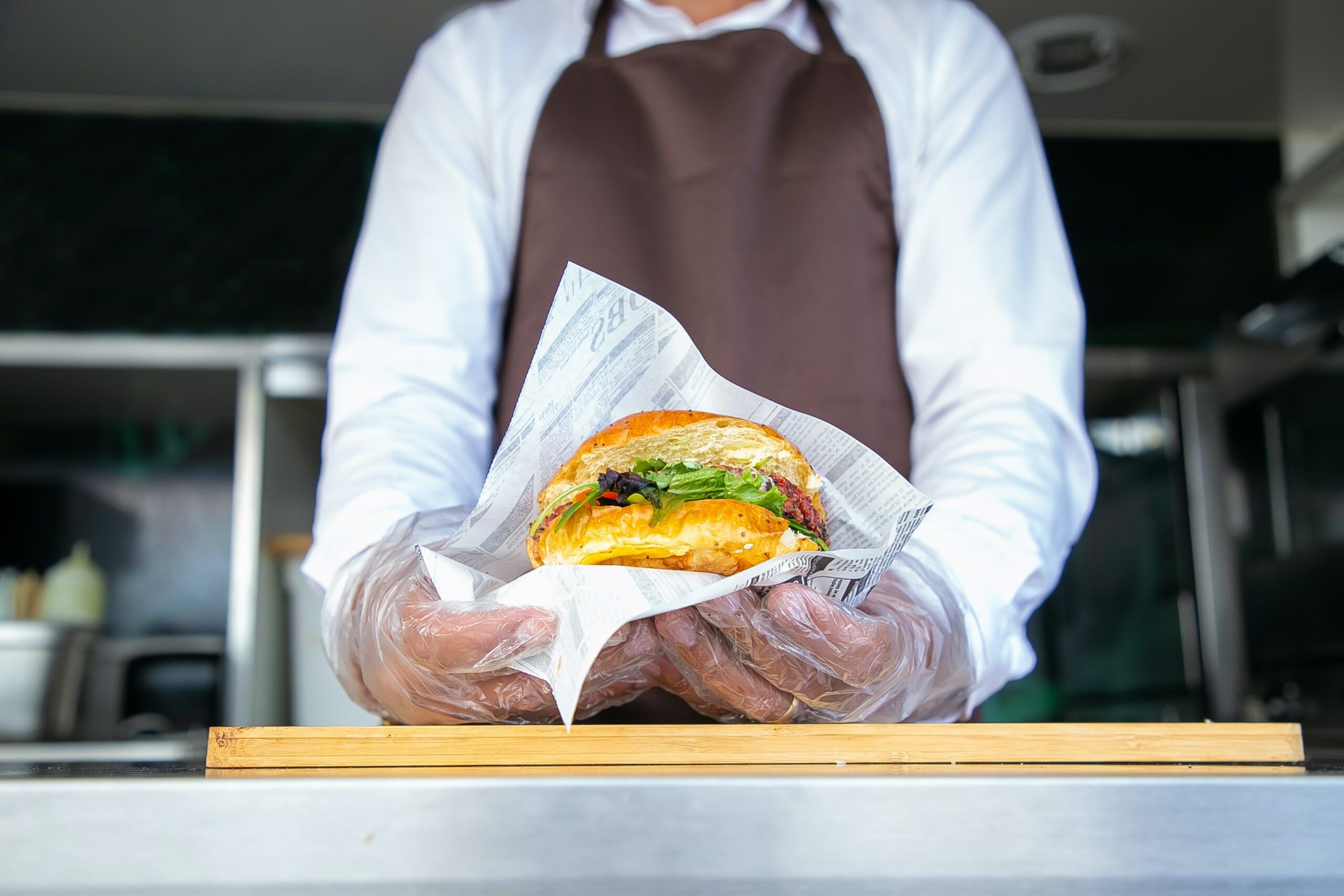- Why is Effective Restaurant Financial Management Important?
- 6 Strategies for Effective Restaurant Financial Management
Opening and running a successful restaurant is a dream for many people, but the reality is that it’s a tough industry with razor-thin margins.
For those looking for a daily business review, it’s essential to note that even the most popular and well-regarded restaurants can fall short if their finances are not managed properly.
The good news is that with the right strategies and tools, anyone can master the art of restaurant financial management and ensure their business is profitable and sustainable.
In this article, Orders.co will dive deep into the world of restaurant finances and explore the key strategies you need to know to effectively manage your restaurant’s finances.
Whether you are just starting or have been in the industry for years, these tips will help you take control of your restaurant’s finances, run a profitable business, and achieve long-term success in the highly competitive restaurant industry. So let’s get started!
Why is Effective Restaurant Financial Management Important?
Effective restaurant financial management is critical to the success and longevity of any establishment in the highly competitive hospitality industry.
A restaurant, whether it is a fine dining restaurant or a casual one, that neglects to manage its finances properly can easily find itself in financial distress with little chance of recovery.
On the other hand, a restaurant that prioritizes financial management can enjoy a range of benefits, including increased profitability, improved cash flow, and better decision-making capabilities.
Here are 8 reasons why effective restaurant financial management is crucial:
Provides Insight into the Overall Health of the Business
Financial management provides valuable insights into the financial health of your restaurant, including profitability, cash flow, and overall financial stability.
This information is essential for making informed decisions and taking proactive steps to address any financial issues.
Helps Identify and Control Costs, Including Food Cost and Labor Expenses
Effective management of finances involves tracking expenses, identifying cost-saving opportunities, and controlling expenses, such as food and a labor cost. By optimizing these costs, you can improve your bottom line and increase your profitability.
Ensures Compliance with Tax and Regulatory Requirements
Proper financial management includes accurate record-keeping, ensuring that you comply with all tax and regulatory requirements. This helps you avoid legal and financial penalties and protects your restaurant’s reputation.
Allows for Data-Driven Decision Making
Financial management enables you to make data-driven decisions based on accurate and up-to-date financial information.
This helps you make informed decisions about pricing, menu development, staffing, and other critical aspects of your restaurant.
Supports Better Cash Flow Management
Effective management of finances helps you maintain healthy cash flow by managing expenses, optimizing revenue streams, and implementing efficient payment and billing processes.
Helps Set and Achieve Financial Goals
By setting clear financial goals and tracking your progress, you can work towards achieving your objectives and growing your restaurant’s profitability.
Enables the Creation of Realistic Budgets and Financial Projections
Managing finances allows you to create realistic budgets and financial projections based on your past performance and future goals. This helps you plan for the future sales, make strategic investments, and ensure the long-term success of your restaurant.
Supports Long-Term Sustainability and Growth
Effective management of finances is a critical component of long-term sustainability and growth for any restaurant.
By managing your finances effectively, you can ensure that your business remains profitable and sustainable over the long term, even in a highly competitive industry.
6 Strategies for Effective Restaurant Financial Management
While the management of finances may sound complicated, it’s actually quite simple when broken down into smaller steps and processes. Here are some of the key strategies you need to know to effectively manage restaurant finances:
Set up a Financial Plan
Setting up a financial plan is a crucial step in effective restaurant financial management. A financial plan outlines your financial goals, strategies, and the specific steps you need to take to achieve them.
By creating a financial plan, you’ll be able to take control of your restaurant’s finances and ensure that you’re on the path to long-term success. Here are the key steps to set up a financial plan for your restaurant:
Define your financial goals
Start by identifying your financial goals, such as increasing revenue, reducing expenses, or improving cash flow. Your goals should be well-defined, measurable, and achievable within a specific timeframe.
Evaluate your current financial situation
Review your financial statements, such as your income statement and balance sheet, to get a clear picture of your restaurant’s financial health. Identify areas of strength and weakness and any financial challenges you need to address.
Develop a budget
Use your financial goals and current financial situation to create a realistic budget. Your budget should include all of your expenses, such as food and labor costs, rent, utilities, and marketing expenses, as well as your projected revenue.
Implement a cash flow management plan
Create a plan to manage your cash flow, including strategies to improve your payment and billing processes and optimize your revenue streams.
Your Inbox, Your Rules!
Tailor your newsletter with the topics you're most interested in.
Monitor your financial performance
Regularly monitor your financial performance, including your balance sheet, income, and cash flow statements, to ensure you’re on track to achieving your financial goals.
Track Financial Performance
Tracking your restaurant’s financial performance is another critical aspect of the effective management of finances.
Some of the key financial metrics you should track include revenue, expenses, profit margins, and cash flow. You should also regularly review your financial statements, including balance sheets, income, and cash flow statements, to gain a comprehensive understanding of your restaurant’s financial situation.
By tracking your financial performance, you can identify areas for improvement, make informed decisions about pricing, staffing, and other critical aspects of your restaurant, and take proactive steps to ensure long-term success and sustainability.
Manage Cash Flow
When it comes to managing restaurant finances, one of the most crucial areas to focus on is cash flow.
Cash flow is the movement of money coming in and out of your restaurant, and it’s a key factor in determining your financial health and stability. Managing cash flow effectively can be a challenge, but it’s essential for ensuring that your restaurant has the funds it needs to operate, pay its bills, and invest in growth.
Some key strategies for managing cash flow include optimizing revenue streams, controlling expenses, and implementing efficient billing and payment processes.
By keeping a close eye on your cash flow and taking steps to improve it, you can ensure that your restaurant has the financial resources it needs to succeed in a competitive and dynamic industry.
Control Food and Labor Costs
While it’s important to provide customers with high-quality food and excellent service, it’s equally essential to manage costs, particularly food and labor expenses.
Food and labor costs are among the most significant expenses for any restaurant, and managing them effectively can make a significant difference to your bottom line.
By taking steps to control labor and food costs, you can not only save money but also improve your restaurant’s overall efficiency and profitability.
Here are some strategies for controlling food and labor costs in your restaurant:
Monitor inventory and waste
Keep track of your inventory and food waste to identify areas of waste and take steps to reduce it. This includes implementing portion control, reducing spoilage, and ordering only the necessary ingredients.
Optimize menu design
Analyze your menu to ensure that you’re offering profitable items while still meeting the needs and preferences of your customers. Avoid overstocking expensive ingredients and focus on creating dishes that use similar ingredients to reduce waste.
Use technology
Implement software that can help you manage your inventory, track food and beverage sales, and schedule your staff efficiently.
Implement effective labor management
Develop a schedule that ensures that you have the right number of staff at the right time, avoiding unnecessary overtime and ensuring that employees are productive during their shifts.
By implementing these strategies, you can control your restaurant’s food and labor costs while still delivering high-quality food and excellent service to your customers.
Understand Taxes and Regulations
When it comes to managing restaurant finances, understanding taxes and regulations is crucial. Restaurants are subject to a range of regulations at the local, state, and federal levels, including health and safety regulations, labor laws, and tax requirements.
Failure to comply with these regulations may result in costly fines, legal action, and reputational damage. It’s important to work with a qualified accountant or tax professional who can help you navigate these regulations and ensure that your restaurant is in compliance.
This includes staying up-to-date with changes to tax laws, understanding payroll requirements, and properly reporting and remitting taxes.
By staying on top of tax and regulatory compliance, you can protect your restaurant’s financial stability and ensure that you avoid costly penalties or legal action.
Invest in Staff Training and Development
Investing in staff training and development is a crucial aspect of effective restaurant management. Your staff is the lifeblood of your restaurant, and they play a significant role in delivering an exceptional customer experience.
By investing in their training and development, you can ensure that they have the skills and knowledge necessary to excel in their roles, which can help to improve the overall success of your restaurant. Here’s how you can effectively invest in staff training and development:
Start with a needs assessment
Before investing in staff training and development, it’s important to assess your staff’s current skills and knowledge to identify areas that need improvement. This can help you design a customized training program that meets the specific needs and requirements of your staff and your restaurant.
Provide ongoing training and development opportunities
Training shouldn’t be a one-time event. Providing ongoing training and development opportunities can help your staff stay up-to-date with the latest industry trends, learn new skills, and develop professionally. This can lead to better performance, higher job satisfaction, and increased loyalty.
Offer cross-training opportunities
Cross-training is an effective way to provide your staff with a broader range of skills and knowledge. It also helps to build a more flexible and agile workforce that can handle a variety of tasks and roles.
Provide incentives for learning and development
Offering incentives such as promotions, pay raises, or bonuses for completing training and development programs can motivate your staff to participate and take their learning seriously.
Use a variety of training methods
People learn in different ways, so it’s important to use a variety of training methods, such as on-the-job training, classroom training, e-learning, and workshops. This can help ensure that your staff is engaged and that the training is effective.
Measure the results
To ensure that your training and development programs are effective, it’s important to measure the results. You can do this by monitoring key performance indicators (KPIs) such as customer satisfaction, sales, and staff turnover rates and making adjustments as necessary.
Overall, investing in staff training and development is a win-win for your staff and your restaurant. It can help your staff develop professionally and grow their skills while also improving the quality of service and the overall success of your restaurant.
Start Managing Your Restaurant’s Finances Effectively Today!
Effective management of finances is crucial for the success and sustainability of any restaurant business.
By tracking expenses, managing cash flow, and making data-driven decisions, you can optimize your profitability, control costs, and ensure compliance with tax and regulatory requirements.
However, managing finances can be time-consuming and complex, which is why many restaurant owners turn to technology solutions. Investing in comprehensive restaurant management software can help streamline the financial management process, automate key tasks, and provide insights into your restaurant’s performance. Fixed costs, for instance, can be regularly tracked and optimized with the right software.
No matter how you approach financial management, the important thing is to start today! Take the necessary steps to gain control of your finances and ensure that your restaurant is on track for long-term success.



